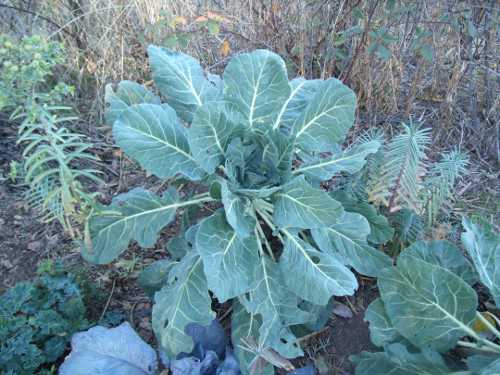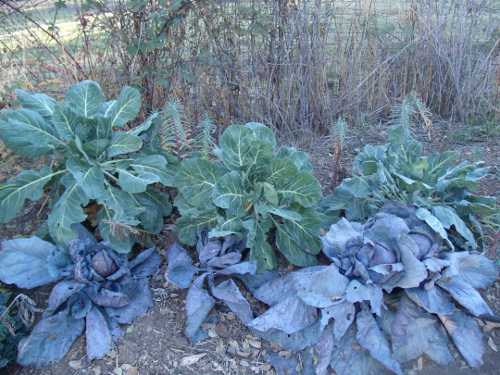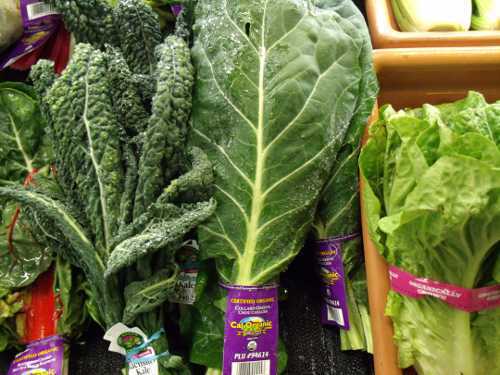
While it may be too late to lock in your luck for 2011 if you didn’t eat collards on the first day of the year, amazing health benefits are provided by this plant year round nonetheless.
Along with vegetables such as broccoli, cabbage, cauliflower, Brussels sprouts and its closest cousin, kale, collard greens are members of the brassica oleracea (also known as cruciferous) family of edible plants.
Its cultivar group name – acephala – means “without a head” in Greek, referring to the mass of loose green leaves that contrast with the compact, tightly-knit core of leaves that form the head of its relative, the cabbage.
It’s been said that collards are an extroverted version of cabbage, growing outward, rather than holding itself in.
Like kale, collards are prized for their ornamental qualities in landscapes. They’re known for their huge presentation of leaves, with a single plant able to grow as much as four feet high and five feet wide. An individual leaf, in fact, can cover a full square foot.
A cold weather crop, the flavor of collard greens is enhanced by frost, and its peak of season is now, between January and April. Fall collard plants can readily survive winter temperatures and produce again in the spring.
While a staple in the cuisine of the American South, collards also enjoy popularity in diverse parts of the world, including Brazil, Portugal, Egypt, Ethiopia and Kashmir, a region in the northwestern portion of the Indian subcontinent.
They’re cultivated on almost every continent.
In Portugal and Brazil, they’re a main component of a popular soup known as caldo verde (green broth), as well as an accompaniment to fish and pork dishes. Caldo verde is considered a national dish and is served daily.
The juice of the collard plant is consumed in these countries as a believed remedy for gout, circulation problems and bronchitis.

Both the leaves and roots are utilized in the cuisine of Kashmir. They may be cooked separately or together, often with meat, fish or cheese. The leaves are cooked in a soup with rice, and both leaves and roots are fermented to make pickles in the winter.
In Egypt, collard greens are cooked in a garlicky soup with starchy taro root, and in Ethiopia, they’re prepared in a spicy fashion with plenty of pepper.
According to botanists, the collard plant has remained the same for more than 2000 years and some consider it a type of kale. The differences between the two include leaf shape, length of stem, color and flavor. Kale is bitterer than its cousin, the deep green collard, which has a milder, somewhat smokier flavor.
Both collards and kale preceded modern-day cabbage. All are descendents of the wild cabbage, which is surmised to have originated in Asia Minor (modern day Turkey) and along the Mediterranean in Greece, and is thought to have been consumed since prehistoric times.
Collard greens have been cultivated since the ancient Greek and Roman civilizations. Interestingly, the Greeks ate only the stalks and avoided the leaves, while the Romans were found of collard leaves and cultivated more than 400 cabbage varieties.
Eventually, by the first century A.D., collards wended their way into other areas of Europe. They were introduced into the U.S. early in our history and were growing prolifically in Virginia by 1619, which marks their first written mention related to our nation.
They are the quintessential vegetable of the American South and, perhaps more than any vegetable other than okra, are strongly associated with that region.
It’s traditional there to simmer them slowly in liquid with salty meats like a ham hock, salt pork or smoked turkey, a practice that dates back to the time of the African slaves, when plantation owners gave them inferior cuts of meat, such as pigs’ feet, and the tops of turnips and other greens.

 How to resolve AdBlock issue?
How to resolve AdBlock issue? 







